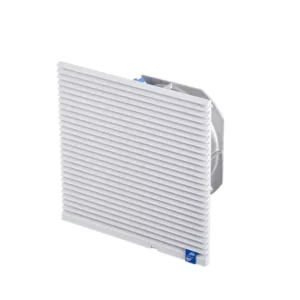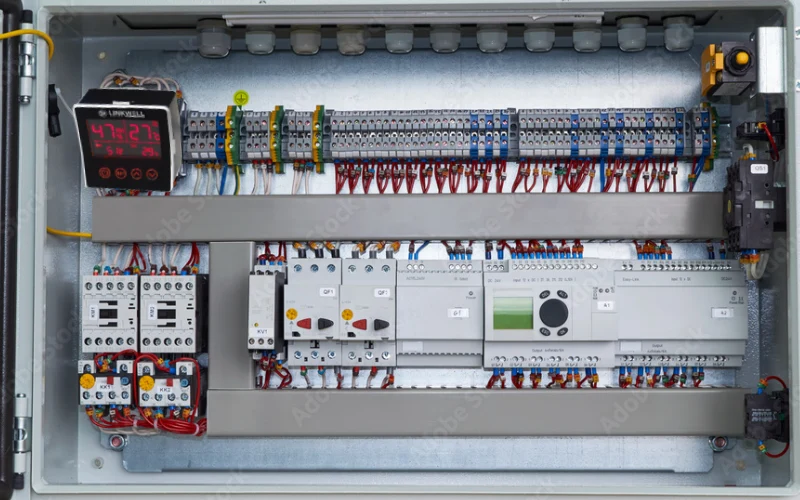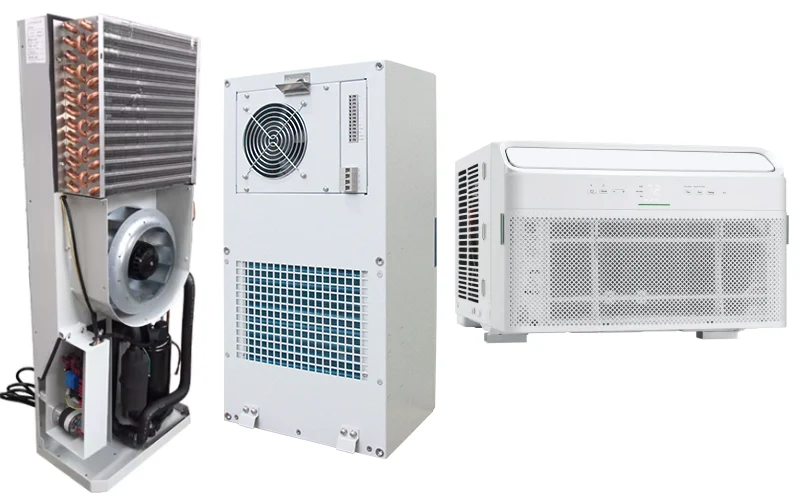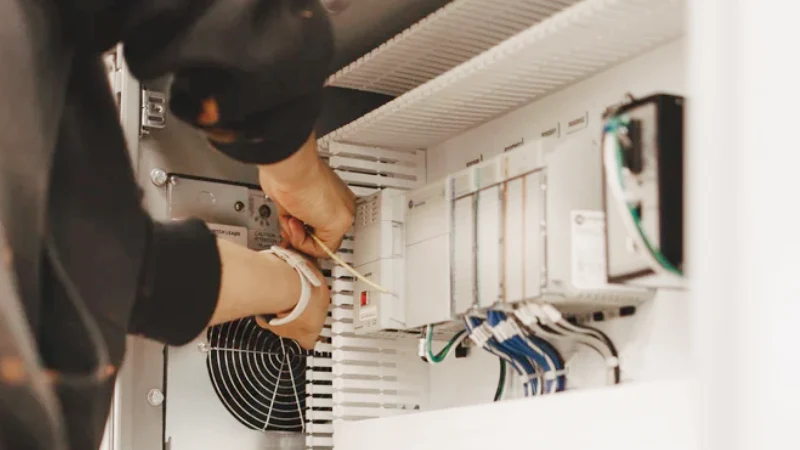When it comes to maintaining optimal conditions for servers, one crucial component that often gets overlooked is cooling. Proper server cooling is not just about keeping machines running; it’s about protecting valuable data, ensuring system longevity, and preventing costly downtime. And in this context, DC axial fans are more than just a piece of equipment—they are the unsung heroes of reliable, efficient cooling systems.
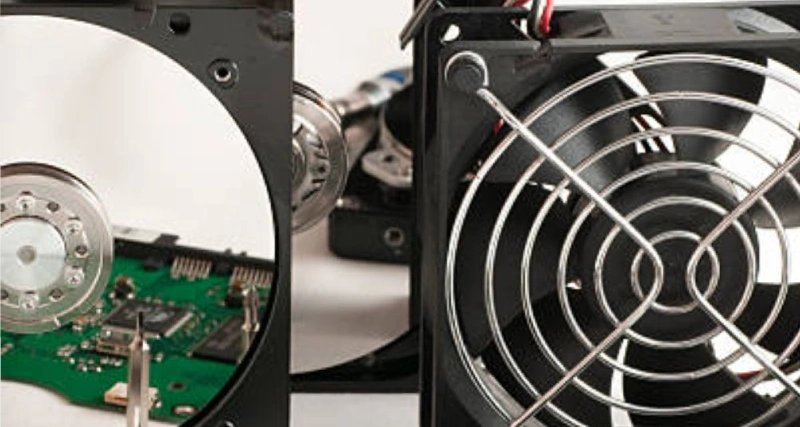
As a DC axial fan manufacturer, we understand how critical this technology is in today’s world of high-performance computing. With the surge in data usage, cloud computing, AI, and gaming, servers are now running at faster speeds and consuming more energy. This places enormous pressure on the cooling systems, making it essential for every data center or server room to utilize high-performance cooling solutions like DC axial fans.
So, what exactly makes these fans so essential? Let’s take a deep dive into why they are a key component in the cooling systems of servers.
What is a DC Axial Fan
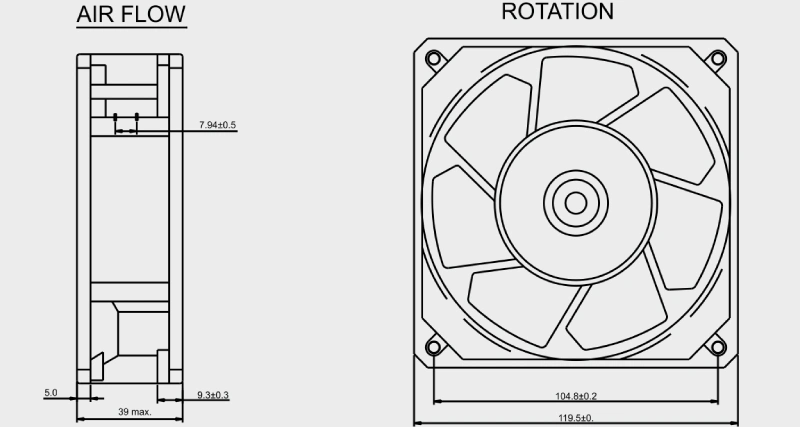
A DC axial fan is a type of cooling fan that uses direct current (DC) electricity to generate airflow. It works by drawing air along the axis of the fan blades, pushing it directly through the fan and toward the area that needs cooling. This design makes it particularly efficient for cooling applications where space is limited or where quiet operation is essential.
The motor in a DC axial fan runs on lower voltage compared to traditional AC fans, making it more energy-efficient and adaptable to various power sources. This feature is especially beneficial for server cooling, computer hardware, and other electronics that require consistent airflow to prevent overheating.
DC axial fans are favored for their reliability, energy efficiency, and quieter operation compared to their AC counterparts. They are ideal for environments that demand precision cooling with minimal noise, such as data centers and home computers.
Recommended products
Role of DC Axial Fans in Cooling Systems
At their core, DC axial fans are designed to move air efficiently through a specific direction, generally pushing air straight through the fan blades and towards the system that needs cooling. Their operation involves the conversion of direct current (DC) power into airflow, making them an energy-efficient choice compared to their AC counterparts.
But why is this important for servers?
Servers are sensitive machines, and they generate significant heat during operation. This heat, if left unchecked, can lead to overheating, damaging the components, and reducing the overall lifespan of the hardware. DC axial fans are essential because they ensure that the heat produced by servers is carried away effectively, creating a stable operating temperature that supports maximum performance.
Additionally, their ability to run on DC power provides some distinct advantages. These fans are typically quieter, more energy-efficient, and more reliable over the long term, which is why they’re preferred by many data centers and server manufacturers.
Energy Efficiency: A Key Factor in DC Axial Fans’ Popularity
One of the most important advantages of DC axial fans is their energy efficiency. As energy costs continue to rise and the demand for more efficient cooling increases, these fans have become a go-to choice for many industries.
Traditional AC fans can be energy-intensive, especially when running multiple units in large server farms. DC fans, on the other hand, consume far less power while providing the same (if not better) cooling performance. This reduction in energy consumption can translate into significant cost savings, particularly in data centers where hundreds or even thousands of fans are in operation 24/7.
Moreover, DC axial fans are designed to operate effectively at lower voltages, meaning they are more adaptable to various power setups without compromising on performance. This flexibility makes them an essential part of modern server cooling systems that require both reliability and cost-effectiveness.
High Performance in Demanding Environments
Server rooms are some of the most demanding environments for any cooling system. They’re filled with racks of equipment, all of which generate immense amounts of heat. Without sufficient cooling, this heat can lead to performance degradation, data corruption, or even hardware failure. DC axial fans are specifically designed to perform under these extreme conditions.
Their ability to provide consistent airflow, even under varying loads, is crucial. Whether the server is running a heavy computation task or handling a light workload, the fan must adapt to the changing thermal load. DC axial fans achieve this adaptability by using advanced motor control systems that can adjust their speed based on temperature fluctuations.
For instance, during times of high demand, the fan will speed up, increasing airflow and preventing the system from overheating. When demand decreases, the fan slows down to conserve energy. This dynamic response is not only energy-efficient but also reduces wear and tear on the fan, ensuring long-lasting reliability.
Axial vs Centrifugal Fan
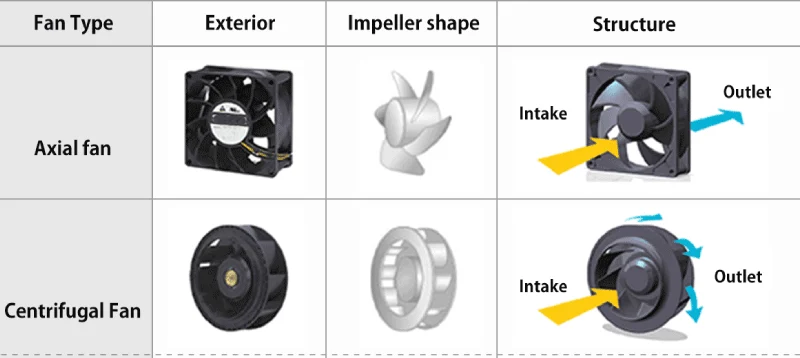
Axial fans and centrifugal fans are both used for cooling and ventilation, but they function quite differently. Axial fans move air along the same axis as the blades. They’re ideal for applications requiring high airflow with low pressure, such as cooling control cabinets, server racks, and electrical enclosures. Axial fans are compact, energy-efficient, and great for spot cooling where space is limited.
On the other hand, centrifugal fans push air at a right angle to the intake direction. They generate higher pressure and are better suited for ducted systems or environments with airflow resistance, like industrial HVAC systems or air filtration units. While they are more powerful under pressure, they tend to be bulkier and consume more energy.
In summary, choose axial fans for high-volume, low-pressure needs and centrifugal fans for low-volume, high-pressure scenarios. Your application’s space, pressure requirement, and energy priorities will determine the best fit.
Axial Fan Industrial Applications
| Industry | Application Area | Use of Axial Fans | Relevance |
|---|---|---|---|
| Industrial Automation | Control Cabinets | Maintain stable internal temperature, protect PLCs, sensors, and power supplies | Prevent overheating of critical control components in automated production lines |
| Electrical Engineering | Electrical Enclosures | Cool circuit breakers, contactors, and relays | Ensure consistent electrical performance, reduce component fatigue and failure |
| Telecommunications | Telecom Signal Cabinets | Dissipate heat from routers, modems, fiber optic components | Guarantee uninterrupted signal transmission and communication reliability |
| Renewable Energy | Inverter Cabinets for Solar/Wind Systems | Ventilate inverters, transformers, and charge controllers | Improve system efficiency and lifespan in fluctuating outdoor environments |
| Transportation | Railway & Roadside Signal Boxes | Control ambient temperature for signaling electronics | Avoid communication delays and ensure passenger safety |
| Power Utilities | Electrical Substations & Switchgear Panels | Provide airflow for transformers and control gear | Ensure energy reliability and reduce operational risks |
| Data Centers & IT | Network & Control Panels | Support ventilation for small-scale server racks or distributed network cabinets | Enhance data processing uptime and prevent thermal throttling |
| Medical Equipment | Control Cabinets in Imaging or Diagnostic Tools | Maintain thermal stability for high-precision instruments | Ensure diagnostic accuracy and prevent device malfunction |
| Aerospace & Defense | Communication & Control Units | Provide airflow in radar and communication system enclosures | Support mission-critical operations in varied temperature zones |
| Building Automation | HVAC Control Panels | Ventilate electrical drives and controllers | Improve energy efficiency and extend the life of building management systems |
Compact Size and Flexible Integration into Server Designs
One of the standout features of DC axial fans is their compact size. As servers become more densely packed with components, space inside server racks is at a premium. DC fans are designed to be lightweight and compact, allowing them to fit into tight spaces without compromising airflow or cooling efficiency.
This compactness makes DC axial fans perfect for integration into various server designs. Whether in a high-density server rack or a more traditional setup, these fans can be easily incorporated into different configurations. Their versatility allows them to be used in both small-scale server rooms and large-scale data centers, without taking up unnecessary space.
Furthermore, their design offers superior airflow with minimal noise, making them ideal for environments where reducing noise pollution is also a priority. The small size, combined with high efficiency, makes these fans a popular choice for engineers and designers seeking cooling solutions that fit both technical and spatial constraints.
| Feature | Description |
|---|---|
| Product Type | Compact Size Axial Fan |
| Typical Sizes | 60mm, 80mm,120mm,140mm,180mm, |
| Voltage Options | 5V / 12V / 24V / 48V DC |
| Applications | Control panels, electrical enclosures, telecom cabinets, server racks |
| Airflow Range | 5 – 80 CFM (Cubic Feet per Minute) |
| Noise Level | Low-noise design (18–40 dBA depending on model) |
| Mounting Options | Panel mount, flange mount, or clip-on |
| Bearing Type | Sleeve bearing / Ball bearing / Hydro-dynamic bearing |
| Certifications | CE, RoHS, UL compliant (model-dependent) |
| Operating Temperature | -10°C to +70°C (depending on model) |
| Advantages | Compact, energy-efficient, long life, easy to install |
| Common Industries | Telecom, Automation, HVAC, Industrial Electronics, Renewable Energy Systems |
Long-Term Reliability and Reduced Maintenance Costs
When you invest in server cooling, you want a solution that’s going to last. DC axial fans excel in this area due to their robust design and reliability. The absence of moving parts, such as brushes, in the fan’s motor ensures that these fans have a longer lifespan compared to their AC counterparts.
For businesses, this is a game-changer. Fewer breakdowns mean reduced maintenance costs and less downtime. By incorporating DC axial fans into server cooling systems, organizations can rest easy knowing that the system will keep running smoothly for years, minimizing the need for frequent repairs or replacements.
Moreover, DC axial fans can operate in varying temperatures and environments, making them suitable for data centers in a variety of climates. Whether in hot and humid conditions or cooler, more controlled environments, these fans are up to the challenge.
Industry Standards and Best Practices for Server Cooling
When discussing any cooling system, it’s essential to refer to industry standards and best practices. In the world of DC axial fans and server cooling, several regulations ensure that these cooling systems operate efficiently, safely, and effectively.
The ASHRAE TC 9.9 (American Society of Heating, Refrigerating and Air-Conditioning Engineers) has established guidelines for data center cooling that include recommendations for fan efficiency, air distribution, and thermal management. These standards are crucial for maintaining the reliability and longevity of servers.
Additionally, fan manufacturers, including those of DC axial fans, must adhere to IEC 60335-2-80 and ISO 9001 standards, ensuring that their products meet global quality benchmarks. As a manufacturer, we continuously test our fans against these standards, ensuring that our products not only meet but exceed industry expectations.
Customer Reviews and Real-World Success Stories
As a DC axial fan manufacturer, we receive valuable feedback from both wholesalers and end-users about the performance and reliability of our fans. Here are some insights:
Wholesaler Feedback:
“Since incorporating DC axial fans into our cooling solutions, we’ve seen a noticeable improvement in system reliability and energy efficiency. Our clients are happy with the reduced maintenance costs and lower energy bills, making this fan a top recommendation for server cooling solutions.”
End-User Testimony:
“We’ve been using DC axial fans in our data center for over two years now, and they’ve been nothing short of outstanding. The performance has been consistent, and we’ve noticed a 15% reduction in our cooling costs. Not to mention, the fans are virtually silent, which is a huge bonus for our staff who work in the facility.”
These positive reviews underscore the growing trust in DC axial fans as a cornerstone for effective server cooling.
Conclusion
In conclusion, DC axial fans are not just an accessory; they are a crucial part of modern server cooling systems. Their ability to offer energy efficiency, reliability, and adaptability makes them indispensable in keeping servers running at optimal temperatures. As data centers continue to grow and require more sophisticated cooling systems, these fans will play an even larger role in preventing overheating and extending the life of critical IT infrastructure.
Whether you’re an IT professional, a server manufacturer, or a data center manager, it’s clear that investing in high-quality DC axial fans is a smart decision. With their impressive track record of performance, energy efficiency, and long-term reliability, DC axial fans are an essential component of any high-performing server cooling system.
FAQs
Why are DC axial fans preferred over AC fans for server cooling?
DC axial fans are more energy-efficient, quieter, and have a longer lifespan compared to AC fans, making them ideal for cooling servers that require consistent and reliable airflow.
What are the key benefits of using DC axial fans in a data center?
The key benefits include energy savings, reduced noise, improved reliability, and long-term cost savings due to less frequent maintenance.
How do DC axial fans adapt to changing server loads?
DC axial fans come equipped with advanced motor control systems that adjust their speed based on the temperature fluctuations, ensuring optimal cooling at all times.
What are the industry standards for server cooling?
Industry standards like those from ASHRAE and IEC ensure that cooling systems, including DC axial fans, meet performance, safety, and efficiency guidelines.
Can DC axial fans be used in different environmental conditions?
Yes, DC axial fans are designed to operate in a variety of environments, from hot and humid to cooler, more controlled spaces, making them versatile for data centers worldwide.
How can I ensure the longevity of my DC axial fans?
Regular maintenance, ensuring proper airflow, and monitoring temperature levels will help prolong the life of your fans and maintain efficient cooling.

